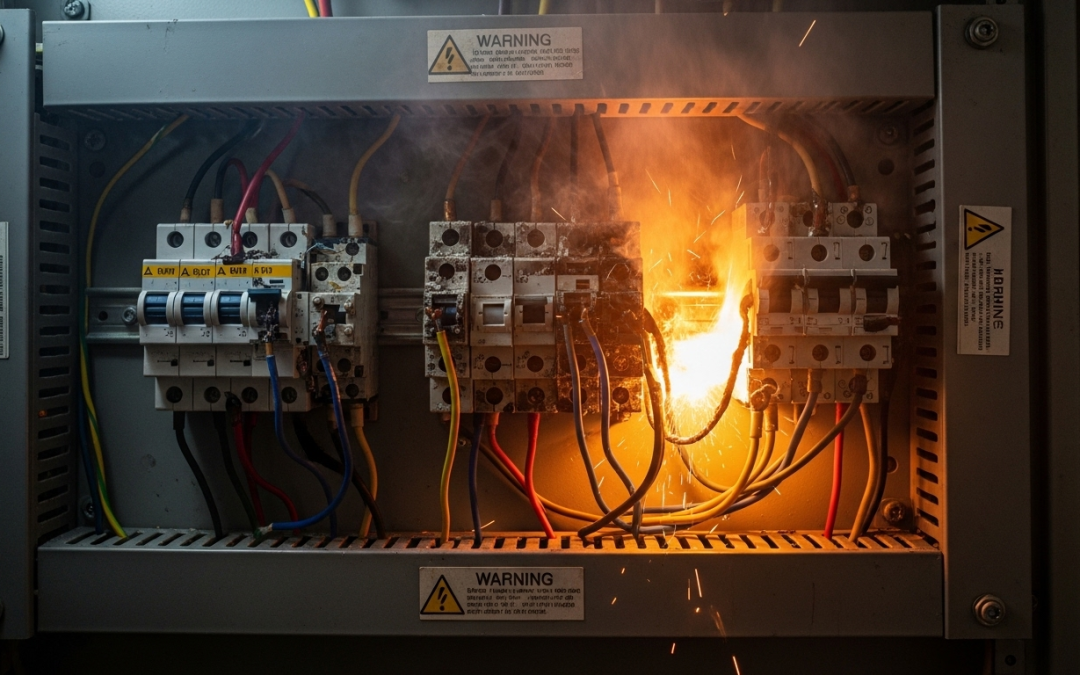Have you ever come into contact with a warm electrical outlet or noticed a subtle buzzing noise emanating from a switch? That “hot hum” is not typical; it indicates that your electrical system is signaling an issue. If ignored, this could escalate into a significant fire risk.
Why Do Electrical Components Get Hot?
The concise response is: resistance.
A properly functioning electrical system facilitates the smooth flow of electricity, encountering minimal resistance. However, when issues arise—such as a loose wire or an overloaded circuit—resistance escalates. This excess energy is dissipated as heat.
Consider it analogous to a garden hose. When the hose is in a straight position, water flows effortlessly. However, if it becomes kinked, pressure accumulates at the kink, resulting in a strained hose. In the context of electricity, this “strain” manifests as heat at vulnerable points.
Common Causes of Hot Outlets and Wiring
Loose Connections – The “Sparking” Issue
- What Occurs: A loose wire results in a gap, compelling electricity to leap across. This produces small sparks known as arcs.
- The Risk: Arcing produces intense heat, which can melt insulation and metal. It ranks among the leading causes of electrical fires.
- Indicators: Flickering lights, sizzling or buzzing noises, and burning odors.
Overloaded Circuits – The “Strained” System
- What Occurs: Each circuit is designed to manage a specific amount of power, determined by the thickness of the wires and the size of the breaker. Connecting an excessive number of high-power devices compels the circuit to carry more current than it can safely accommodate.
- The Risk: Wires can overheat similarly to muscles that are subjected to excessive strain. Although circuit breakers are intended to trip in such situations, repeated instances of overload can lead to lasting damage.
- Indicators of Trouble: Warm outlets, circuit breakers that frequently trip, and lights that dim when appliances are in operation.
Degraded or Defective Components – The “Aging” System
- What Occurs: Outlets, switches, and circuit breakers deteriorate as time passes. Corrosion and wear elevate resistance levels.
- The Risk: Even with regular usage, aged components can become dangerously hot. Homes that are older, particularly those with obsolete wiring, face heightened risks.
- Advice: If your residence is more than 30 years old, consider obtaining an electrical inspection.
Improper Installation – The Concealed Defect
- What Occurs: Errors made during DIY projects, such as screws that are not tightened sufficiently, incorrect wire types, or inadequate grounding, lead to vulnerabilities.
- The Risk: These defects can remain unnoticed for years, gradually generating heat until they result in failure or fire.
- Note: It is essential to always engage a licensed electrician for any wiring tasks.
How Electricians Detect Hot Spots
Experts do not rely on guesswork—they utilize specialized instruments to uncover concealed hazards:
- Thermal Imaging Camera – Identifies hot spots within walls and panels.
- Voltage & Current Testers – Assess whether circuits are experiencing overloads.
- Torque Screwdriver – Guarantees optimal tightness on connections.
- Insulation Resistance Testers – Detects deteriorating wire insulation prior to failure.
Why Ignoring Hot Outlets Is Dangerous
A warm outlet or humming switch is never “just normal.” Ignoring it risks:
- Electrical fires starting behind walls.
- Shock hazards from melted insulation.
- Damage to appliances from unstable circuits.
Think of it as a smoke alarm going off early—a warning sign you shouldn’t ignore.
Safety Tips for Homeowners
- Feel outlets occasionally—if one is warm, unplug devices and call a pro.
- Don’t overload power strips or circuits.
- Upgrade outdated wiring in older homes.
- Schedule regular inspections for safety.
Final Thoughts: Take Action Before It’s Too Late
A warm hum or heated outlet indicates that your home is signaling: “I am experiencing issues.” This is not a matter to delay. Contact a certified electrician without hesitation.
Safeguarding your home against electrical overheating goes beyond merely avoiding damage—it is essential for ensuring the safety of your family.

